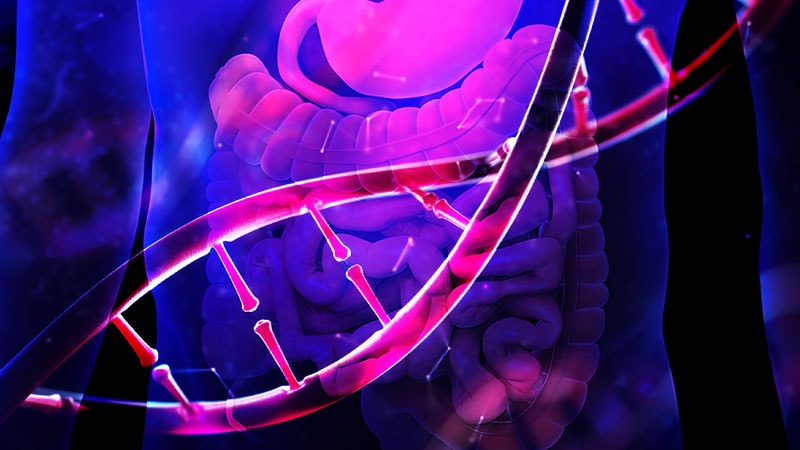Unlocking Dietary Insights Through Fecal DNA Analysis: A Novel Approach to Nutrition Research
Core Concepts
Analyzing the DNA in human feces can provide valuable insights into people's diets, potentially leading to personalized nutrition strategies and better understanding of the links between diet and health.
Abstract
The article discusses how researchers are using DNA sequencing of human fecal samples to reconstruct people's diets and gain insights into the relationship between diet and health.
Key highlights:
Researchers can detect the DNA of 10-20 plant species and 3-4 animal species in a typical person's stool, providing a detailed picture of their diet.
This "fecal forensics" approach is more accurate than self-reported dietary data, as people often forget, underreport, or misrepresent what they have eaten.
The process involves physically breaking open plant cells in the stool samples and using polymerase chain reaction (PCR) to amplify and identify the DNA sequences of different plant species.
Studies have found that children with obesity tend to have a higher diversity of plant species in their stool, likely due to the higher processing and ingredient content of the foods they consume.
Fecal DNA analysis has the potential to help design personalized nutrition strategies, study the impact of diet on the gut microbiome, and investigate the links between diet and various health conditions, such as diverticular disease.
Challenges include the high cost and labor-intensive nature of the analysis, as well as the fact that it primarily focuses on plant DNA and may not capture all dietary components.
Poop Doesn't Lie: What Fecal 'Forensics' Tells Us About Diet
Stats
"A typical person's excrement probably contains the DNA of 10-20 plant species and three or four types of animal DNA. And that's the average person. Some people may have more like 40 types at any given time."
"The concentration of bacteria in stool is amongst the highest concentrations of bacteria on the planet."
"There are 200,000 to 300,000 species of edible plants estimated to be on the planet. I think historically, humans have eaten about 7000 of them."
"Kids with obesity had a higher diversity of plants in them than kids without obesity."
"A Big Mac and fries and a coffee have 19 different plant species."
Quotes
"We are using DNA sequencing to reconstruct what people eat. We try to see if there are patterns in what people eat and how we can measure them by DNA, or kind of genetic forensics."
"Patients report the fruit they ate yesterday but not the M&Ms."
"The more I dug into it, it turns out that foods that are more processed often tend to have more ingredients."
Key Insights Distilled From
by Mary Brophy ... at www.medscape.com 04-08-2024
https://www.medscape.com/viewarticle/poop-doesnt-lie-what-fecal-forensics-tells-us-about-diet-2024a10006mo
Deeper Inquiries
How can fecal DNA analysis be used to study the impact of climate change on global dietary patterns and diversity?
Fecal DNA analysis can be utilized to track changes in dietary patterns and diversity influenced by climate change. By analyzing the DNA of plant species present in human feces, researchers can identify shifts in the consumption of various plants due to environmental factors. For example, as certain plant species become more scarce or abundant due to climate change, corresponding changes in human dietary habits may be reflected in fecal DNA analysis. This data can provide insights into how climate change is impacting the availability and consumption of different foods globally, allowing for a better understanding of the relationship between environmental changes and dietary practices.
What are the potential ethical and privacy concerns associated with the widespread use of fecal DNA analysis for dietary assessment, and how can they be addressed?
The widespread use of fecal DNA analysis for dietary assessment raises several ethical and privacy concerns. One major concern is the potential misuse of personal genetic information obtained from fecal samples, which could lead to discrimination or breaches of privacy. Additionally, there may be issues related to informed consent, as individuals may not fully understand the implications of providing their fecal samples for DNA analysis.
To address these concerns, strict protocols must be established to ensure the confidentiality and security of genetic data obtained from fecal samples. Researchers should obtain informed consent from participants, clearly explaining the purpose of the study, how their data will be used, and the measures in place to protect their privacy. Data anonymization techniques can be employed to de-identify genetic information, reducing the risk of individuals being identified based on their fecal DNA analysis results. Furthermore, regulatory frameworks and guidelines should be implemented to govern the ethical conduct of research involving fecal DNA analysis, safeguarding the rights and privacy of participants.
Could fecal DNA analysis be used to develop a comprehensive database of the world's edible plant species and their nutritional profiles, and how might this information be leveraged to improve global food security and sustainability?
Fecal DNA analysis has the potential to contribute to the development of a comprehensive database of the world's edible plant species and their nutritional profiles. By analyzing the DNA of plant species present in fecal samples, researchers can identify the specific plants consumed by individuals and gather data on their nutritional content. This information can be compiled into a database that catalogs the diversity of edible plant species worldwide and provides insights into their nutritional value.
Such a database could be leveraged to improve global food security and sustainability in several ways. Firstly, it could aid in promoting dietary diversity by highlighting lesser-known but nutritionally rich plant species that could enhance the nutritional quality of diets. Additionally, the database could inform agricultural practices by identifying plant species that are resilient to climate change or have high nutritional value, thus guiding efforts to cultivate sustainable food sources. Moreover, policymakers and nutritionists could use this information to design interventions and policies that promote the consumption of a diverse range of nutritious plant foods, ultimately contributing to improved public health and food sustainability on a global scale.
0
